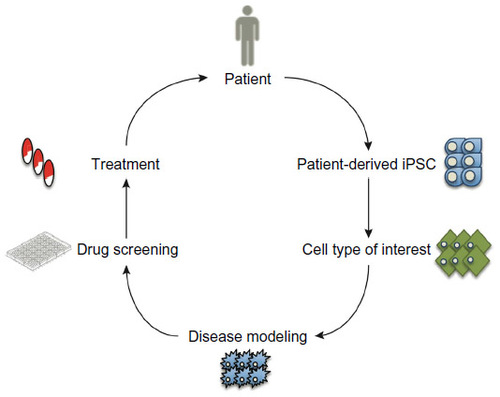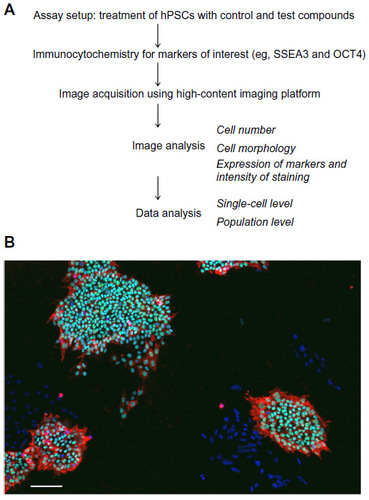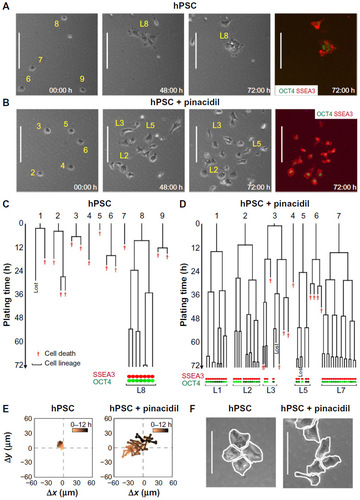Figures & data
Figure 1 A model for drug discovery using patient-derived hiPSCs.
Abbreviation: hiPSCs, human-induced pluripotent stem cells.

Figure 2 hPSCs can differentiate to derivatives of all three embryonic germ layers (ectoderm, mesoderm, endoderm).
Abbreviations: hPSCs, human pluripotent stem cells; TGFβ, transforming growth factor beta; BMP, bone morphogenetic protein; FGF, fibroblast growth factor; Shh, sonic hedgehog; VEGF, vascular endothelial growth factor; DKK1, Dickkopf-related protein 1; EGF, epidermal growth factor; RA, retinoic acid.

Figure 3 High-content imaging of hPSCs allows detection of cell phenotypes based on cell numbers, morphology, and marker staining.
Abbreviations: hPSCs, human pluripotent stem cells; ESC, embryonic stem cell; OCT4, octamer-binding transcription factor 4; SSEA3, stage-specific embryonic antigen 3.

Figure 4 Time-lapse imaging allows detailed analysis of hPSC survival, proliferation, motility, morphology, and spatial distribution of cells in colonies.
Abbreviations: hPSC, human pluripotent stem cell; OCT4, octamer-binding transcription factor 4; SSEA3, stage-specific embryonic antigen 3; h, hours.

